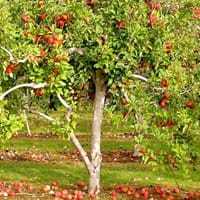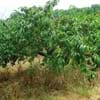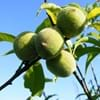Life Span
Perennial
Perennial
Type
Fruit
Flowering Plants, Fruits, Trees
Origin
Hybrid origin
Central Asia
Types
Fruit
Aceymac apple, Bailey Sweet apple, Dabinett apple, Nehou apple
Habitat
Temperate Regions
Hillside
USDA Hardiness Zone
4-8
5-8
Sunset Zone
A2, A3, 1a, 1b, 2a, 2b, 3a, 3b, 4, 5, 6, 7, 8, 9, 14, 15, 16, 17
A1, A2, A3, 8, 9, 10, 11, 12, 13, 14, 15, 16, 17, 18, 19, 20, 21, 22, 23, 24
Habit
Oval or Rounded
Oval or Rounded
Flower Color Modifier
Bicolor
Not Available
Fruit Color
Red, Dark Red
Green, Red
Leaf Color in Spring
Dark Green
Dark Green
Leaf Color in Summer
Dark Green
Green
Leaf Color in Fall
Dark Green
Brown, Green, Light Yellow
Leaf Color in Winter
Light Green
Not Available
Leaf Shape
Simple lobed or unlobed
Oblong
Plant Season
Spring, Summer
Spring
Sunlight
Full Sun, Partial Sun
Full Sun, Partial shade
Growth Rate
Medium
Medium
The pH of Soil
Acidic, Neutral
Neutral
Soil Drainage
Well drained
Well drained
Bloom Time
Early Spring, Spring
Fall, Summer
Tolerances
Drought
Drought
Where to Plant?
Ground
Ground
How to Plant?
Semi-hardwood and hardwood cuttings
Grafting, Seedlings, Transplanting
Plant Maintenance
Medium
Medium
Watering Requirements
Keep ground moist, Use Mulches to help prevent water loss during hot and windy weather
Medium
In Summer
Lots of watering
Lots of watering
In Spring
Moderate
Moderate
In Winter
Average Water
Average Water
Soil pH
Acidic, Neutral
Neutral
Soil Drainage Capacity
Well drained
Well drained
Sun Exposure
Full Sun, Partial Sun
Full Sun, Partial shade
Pruning
Remove damaged leaves, Remove dead branches, Remove dead leaves
Prune when plant is dormant, Remove dead or diseased plant parts
Fertilizers
All-Purpose Liquid Fertilizer
All-Purpose Liquid Fertilizer
Pests and Diseases
Birds
Aphids, Canker, Caterpillars, Powdery mildew, Root rot
Plant Tolerance
Drought
Drought
Flower Petal Number
Single, Double
Single
Foliage Texture
Medium
Medium
Foliage Sheen
Glossy
Matte
Allergy
Anaphylaxis, gastro-intestinal problems, Itchiness, Skin irritation
Mouth itching, Throat itching
Aesthetic Uses
Beautification, Bouquets, Informal Hedge, Landscape Designing, Showy Purposes, Wild gardens
Not Used For Aesthetic Purpose
Beauty Benefits
Not Available
Not Available
Environmental Uses
Air purification
Air purification
Medicinal Uses
anti-inflammatory, Anti-oxidant, Gout, Insomnia, Soothing and relieving pain
Cancer, constipation, Diabetes, Diarrhea, Dysentry, Fever, Heart problems, Tooth ache
Part of Plant Used
Flowers, Fruits
Fruits
Other Uses
Air freshner, Beneficial species for attracting pollinators, Cake, Edible syrup, Oil is used in perfume, soaps, creams, etc., Used to make juice
Used As Food, Wood is used for making furniture
Used As Indoor Plant
No
No
Used As Outdoor Plant
Yes
Yes
Garden Design
Edible, Fruit / Fruit Tree, Mixed Border
Fruit / Fruit Tree, Shade Trees, Showy Tree
Botanical Name
PRUNUS cerasus
Malus domestica
Common Name
Pie Cherry, Sour Cherry, Tart Cherry
Apple Tree
In Hindi
Sour cherry
सेब का वृक्ष
In German
Sauerkirsche
Apfelbaum
In French
Prunus cerasus
Pommier
In Spanish
Prunus cerasus
Manzano
In Greek
Sour cherry
μηλιά
In Portuguese
Ginja
Macieira
In Polish
Wiśnia pospolita
jabłoń
In Latin
Prunus cerasus
Arbore
Phylum
Tracheophyta
Magnoliophyta
Class
Magnoliopsida
Magnoliopsida
Clade
Angiosperms, Eudicots, Rosids
Angiosperms, Eudicots, Rosids
Tribe
Not Available
Not Available
Subfamily
Not Available
Not Available
Number of Species
Not Available
Season and Care of Sour Cherry and Apple Tree
Season and care of Sour Cherry and Apple Tree is important to know. While considering everything about Sour Cherry and Apple Tree Care, growing season is an essential factor. Sour Cherry season is Spring and Summer and Apple Tree season is Spring and Summer. The type of soil for Sour Cherry is Loam and for Apple Tree is Loamy while the PH of soil for Sour Cherry is Acidic, Neutral and for Apple Tree is Neutral.
Sour Cherry and Apple Tree Physical Information
Sour Cherry and Apple Tree physical information is very important for comparison. Sour Cherry height is 300.00 cm and width 300.00 cm whereas Apple Tree height is 25.00 cm and width 20.00 cm. The color specification of Sour Cherry and Apple Tree are as follows:
Sour Cherry flower color: White
Sour Cherry leaf color: Dark Green
Apple Tree flower color: White
- Apple Tree leaf color: Dark Green
Care of Sour Cherry and Apple Tree
Care of Sour Cherry and Apple Tree include pruning, fertilizers, watering etc. Sour Cherry pruning is done Remove damaged leaves, Remove dead branches and Remove dead leaves and Apple Tree pruning is done Prune when plant is dormant and Remove dead or diseased plant parts. In summer Sour Cherry needs Lots of watering and in winter, it needs Average Water. Whereas, in summer Apple Tree needs Lots of watering and in winter, it needs Average Water.





